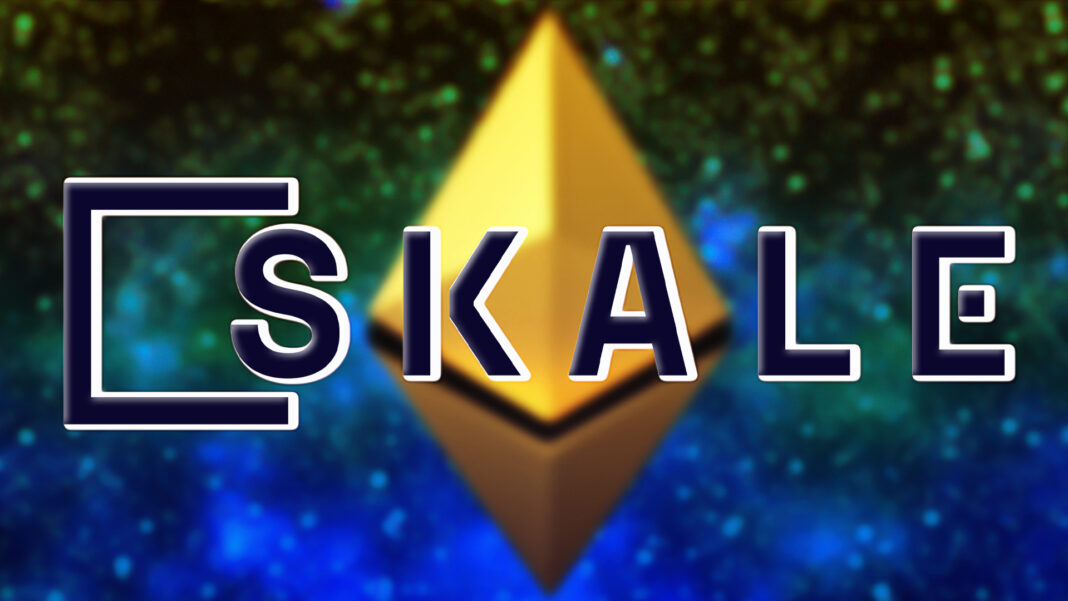- SKALE is a zero gas fee scaling solution of Ethereum.
- It offers Ethereum-as-a-service through its Elastic Side Chains.
- SKL is the native token for the network.
The ever-increasing number of users and dApps on popular public blockchains like Ethereum have pushed their speed and capacity to their limits. This has resulted in friction in the network along with increased gas fees. Developers are looking for unique scaling solutions to reduce network congestion.
SKALE promises to achieve this through Elastic Side Chains.
What Is SKALE Network?
The primary use for the SKALE network was to provide Elastic Side Chains to consumers. Thus, it is also referred to as Elastic Sidechain Network. SKALE is an Ethereum-based network of unlimited independent sidechains, the first live blockchain with linear scaling. The network promises to provide low-latency, high-throughput, seamless messaging and charge zero gas fees.
- The Concept of Elastic Side Chains
The network aims to provide Ethereum-as-a-service to developers. For this, they use side chains. These sidechains are highly customizable. The consumer can choose their consensus protocol, virtual machine, parent chain, chain size, and additional security measures as well. Due to its flexibility, it is called Elastic. This service works on a subscription-based model, where the customer first specifies their desired chain configuration and pays for the duration he would like to rent the network resources.
- Elastic Sidechain Creation
After a customer has specified his chain’s configuration and submitted the payment, nodes that have the required computation and storage requirements are then randomly selected and assigned as their virtualized subnodes.
Based on their budgets, the customers have the option to start with a minimum number of 16 virtual subnodes. Each virtual subnode can use either 1/128 , 1/16 or 1/1 of their node’s resources.
Image 1, shows the small chain in golden color, where the virtual subnodes take 1/128th of the node’s space.
Image 2, shows the medium chain in blue color, where the virtual subnodes take 1/16th of the node’s space.
Image 3, shows the medium chain in purple color, where the virtual subnodes take 100% of the node’s space
Image 4, shows a single node and how its resources are divided and used up by different chains.
Image 5, shows the complete use of a node’s resource by a single large chain.
Image 6, shows the elastic side creation. Notice how the small and medium chains are distributed into 16 hexagons.
- Elastic Sidechain Destruction
If a customer asks for his sidechain to be deleted or his duration has ended, the sidechains go under the process of destruction. During this process, any crypto tokens or digital assets from the Ethereum parent chain are transferred to the owners. The virtual subnodes associated with the sidechain are deleted and the subchain is permanently removed from the SKALE Manager.
- The Concept of SKALE Manager
SKALE Manager is present on the Ethereum network and serves as the entry gate into the SKALE ecosystem.
Image 7, the yellow file represents the SKALE manager, allowing the entry of smart contracts from Ethereum into the SKALE ecosystem.
Consensus Protocol
The protocol used by SKALE takes into account the malicious actors which can interfere with network messaging, downtime of nodes and support high throughput. It is explained below:
- Leaderless
Presently many consensus models elect a leader in rounds who has the right to propose a block. Being leaderless, SKALE prevents any conspiracy among participants and gives all nodes a fair chance to propose a block.
- Asynchronous
In an asynchronous timing model, there is no time limit on how long a message sent by a node will take to be delivered in the network. In other words, the virtual subnodes have no expectations of an immediate response. This model is similar to the present functioning of the internet.
- Byzantine Fault Tolerant
BFT is a standard security protocol in distributed systems that guarantees that the nodes will agree on the same consensus in the presence of < 1/3 malicious nodes.
Features
The SKALE network is designed specifically for the Ethereum network which makes it compatible with all the Ethereum protocols and makes it an ideal network for dApps deployment. The elastic sidechains are versatile. They allow dApps to store their files like websites, apps, and NFTs on-chain. The sidechains have immediate finality time allowing a transaction to instantly be committed on the blockchain.
The most important feature is how the network eliminates gas fees and instead charges a single payment for sidechain maintenance.
Tokenomics
SKL is the native token for the SKALE network which is used for paying the subscription fees. It is also used in governance, voting rights, rewarding stakeholders, and incentivizing the nodes.
Image 9 shows the token allocation among different parties.
Final Thoughts
The SKALE network increases the flexibility and functionality of the Ethereum blockchain. It can be widely used by the gaming industry for GameFi and P2E games. It can be used to build DEX, predict markets, and conduct online auctions, for dE-Commerce and DAOs.




